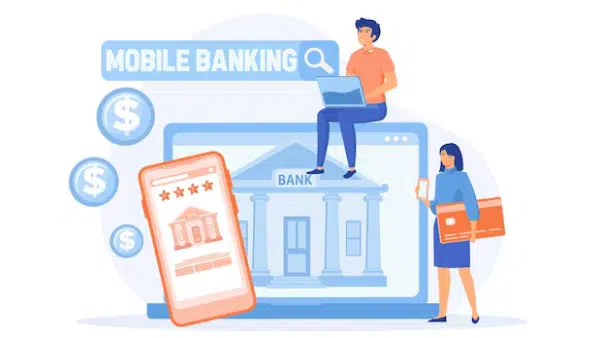In recent years, digital banking services have fundamentally transformed the way individuals manage their finances. From traditional banks transitioning online to new, nimble fintech companies offering cutting-edge solutions, the evolution of financial technology has been rapid and profound.
This shift is not just about convenience; it’s about redefining financial habits and decision-making. The widespread adoption of online and mobile banking has made managing money simpler, faster, and more accessible. As digital banking continues to innovate, it is crucial to understand its evolution and the subsequent impact on personal finance management.
The digital banking revolution

The digital banking revolution began with the simple idea of bringing banking services online. Traditional banks were the first to introduce online services, allowing customers to check balances, transfer funds, and pay bills from their computers. This was a game-changer, offering unprecedented convenience. However, it was only the beginning.
As we embrace this digital age, it’s fascinating to note how these banking services have evolved. Initially, online banking services were rudimentary, with limited functionality. Gradually, banks incorporated more features, responding to consumer demand for more comprehensive digital financial solutions. The rise of smartphones further accelerated this evolution, leading to the development of mobile banking apps that offer a full suite of services, from opening accounts to investing in stock markets.
While traditional banks were the pioneers, the rise of fintech companies marked a new chapter in this revolution. These technology-driven financial companies have disrupted conventional banking by offering innovative and customer-centric solutions. Unlike traditional banks, fintech firms are agile, adapting quickly to market changes and leveraging cutting-edge technology to enhance the user experience.
The role of mobile banking
Mobile banking is undeniably a cornerstone of the digital banking revolution. The proliferation of smartphones and advances in mobile technology have made it possible for consumers to handle their financial activities right from their pockets. This shift has encouraged banks and fintech companies to focus heavily on mobile-first strategies, prioritizing the optimization of their apps for seamless user experience.
The convenience of mobile banking has transformed everyday financial tasks into simple and quick processes. For instance, paying bills or transferring money to friends can be completed within a few taps on a smartphone screen, eliminating the need to visit a bank or use a computer. This ease of access has led to increased financial democratization, allowing more people, especially in underbanked regions, to participate in the financial system.
Despite its many benefits, mobile banking presents certain challenges. Security remains a top concern, as cyber threats become increasingly sophisticated. Financial institutions must continually invest in advanced security measures to protect user data and maintain trust. Additionally, while mobile banking has increased accessibility, there is still a need to ensure inclusive access for those who may not have smartphones or reliable internet connections.
The emergence of digital wallets
Digital wallets have emerged as another key component of the evolving landscape of digital finance. These tools allow users to store payment information securely and make transactions effortlessly without physical cards. Popular digital wallets like Apple Pay, Google Wallet, and PayPal have gained widespread acceptance among consumers and merchants alike.
The rise of digital wallets reflects a broader trend towards cashless societies, where physical money is used less frequently. In many parts of the world, digital wallet adoption has accelerated due to the global pandemic, which prompted a shift towards contactless payments. This trend has not only changed how individuals pay for goods and services but also how they think about money, budgeting, and personal finance.
However, the adoption of digital wallets is not without its challenges. As digital wallets store sensitive financial information, they must be equipped with robust security measures to protect against unauthorized access and fraud. Additionally, there is an ongoing debate about data privacy, as digital wallets collect a wealth of user data.
The impact on personal finance
The impact of digital banking innovations on personal finance management is profound. Individuals now have more control over their financial lives than ever before. The tools and resources provided by digital banking platforms empower users to make informed financial decisions. Personalized insights, automated budgeting, and goal-setting features enable consumers to tailor their financial strategies to their specific needs and circumstances.
The shift from traditional to digital banking has also altered consumer expectations. Today’s consumers expect quick, efficient, and seamless financial interactions, which has pushed financial institutions to deliver high-quality digital experiences. This heightened expectation has led to a more competitive financial services landscape, where providers continuously innovate to attract and retain customers.
Moreover, digital banking has increased financial inclusion by reaching underserved populations. Online and mobile platforms have made it easier for individuals without access to traditional banking services to engage with the financial system. This increased accessibility helps in reducing the financial gap and promoting economic growth.
